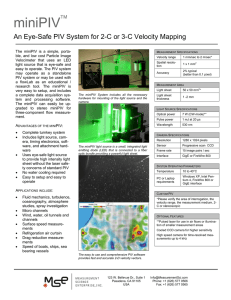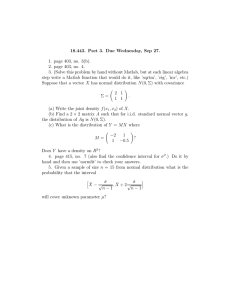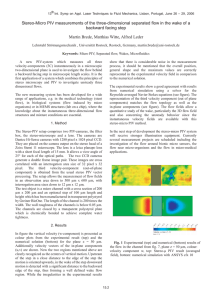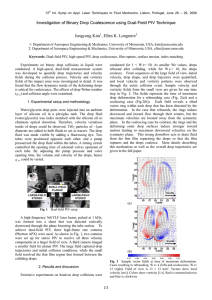AerE344 Pre-Lab Assignment
advertisement
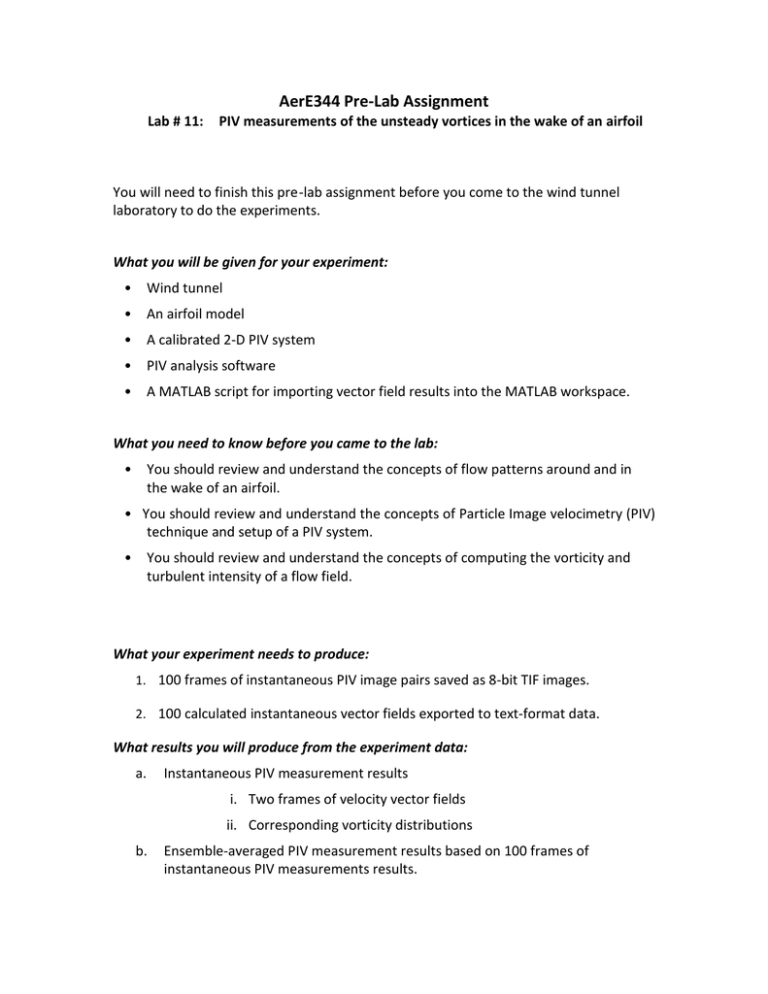
Lab # 11: AerE344 Pre-Lab Assignment PIV measurements of the unsteady vortices in the wake of an airfoil You will need to finish this pre‐lab assignment before you come to the wind tunnel laboratory to do the experiments. What you will be given for your experiment: • Wind tunnel • An airfoil model • A calibrated 2-D PIV system • PIV analysis software • A MATLAB script for importing vector field results into the MATLAB workspace. What you need to know before you came to the lab: • You should review and understand the concepts of flow patterns around and in the wake of an airfoil. • You should review and understand the concepts of Particle Image velocimetry (PIV) technique and setup of a PIV system. • You should review and understand the concepts of computing the vorticity and turbulent intensity of a flow field. What your experiment needs to produce: 1. 100 frames of instantaneous PIV image pairs saved as 8-bit TIF images. 2. 100 calculated instantaneous vector fields exported to text-format data. What results you will produce from the experiment data: a. Instantaneous PIV measurement results i. Two frames of velocity vector fields ii. Corresponding vorticity distributions b. Ensemble-averaged PIV measurement results based on 100 frames of instantaneous PIV measurements results. i. Velocity vectors of the mean flow field ii. Vorticity distribution of the mean flow field iii. Turbulent kinetic energy distribution iv. Wake profile On derived quantities from PIV data: You will produce 100 vector fields computed from PIV image pairs. The data will have the format of (X, Y, Us, Vs) where X and Y are NxM matrices containing the spatial positions of each of the vectors and Us and Vs are NxMx100 matrices containg the x and y components of the velocity vector at each position for each of the 100 snapshots. In MATLAB, you can easily plot the ith vector field using the quiver command: >> quiver(X, Y, Us(:,:,i), Vs(:,:,i)); Similarly, in MATLAB, you can easily plot contours of scalar fields (or single vector components) using the contourf command, e.g., >> contourf(X, Y, Us(:,:,i), 10); Here, 10 specifies that 10 contour levels should be plotted. Ensemble average: In MATLAB, you can easily compute the mean of a data set using the mean command: >> U_mean = mean(Us, 3); Here, the second argument "3" indicates that the average should computed along the third dimension (e.g., average the snapshots). Vorticity calculation: Given data in an x-y plane, only the z-component of vorticity can be calculated. The vorticity in the z-direction was given in lecture as wz= dV/dX – dU/dY. In MATLAB, you can easily compute the vorticity using the curl command: >> [Wz(:,:,i), ~] = curl(X, Y, Us(:,:,i), Vs(:,:,i)); Here, the tilde is required so that MATLAB returns the curl of the data rather than the angular velocity, which is ½ the curl. Turbulent kinetic energy calculation: Recall that the turbulence intensity is defined as root mean square of the velocity fluctations. Namely, the mean must be subtracted from the data before computing the RMS fluctuation. In MATLAB, the velocity fluctuations are given by subtracting the mean: >> U_fluc = bsxfun(@minus, Us, U_mean); Here, the bsxfun expands the dimensions of U_mean to match Us. The RMS can easily be computed as >> U_fluc_rms = sqrt(mean( U_fluc.^2, 3 )); Finally, the turbulence intensity is given as one half of the sum-square of all the velocity fluctuation components: >> TKE = 0.5*(U_fluc_rms.^2 + V_fluc_rms.^2) ;

